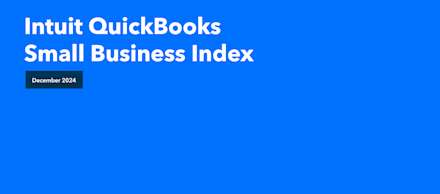
Intuit QuickBooks Small Business Index, December 2024
Simple, smart accounting software - no commitment, cancel anytime

FINANCE, BUDGETS AND CASHFLOW
In the course of doing business, there are costs and expenses that are not directly related to creating products or services, but must still be paid on an ongoing basis.
These are called “overhead costs”. Defining overhead costs is very important not only for budgeting correctly and tracking finances, but also for determining the appropriate costs of goods or services so that your new business can turn a profit.
Overhead costs are a key component for making up the total cost to run a business,
and are made up of ongoing costs that must be paid regardless of the company’s current volume of business. Direct labour costs, direct materials and direct costs (like raw materials), however, are not overhead costs.
Common overhead costs and overhead expenses include:
Rent and Utilities
Repairs and Maintenance
Insurance
Office Supplies
Accounting
Taxes
Human Resources (Only salaries for administrative employees that handle tasks like hiring, onboarding, etc. Does not apply to non-HR staff.)
Regardless of the company’s revenue, overhead costs must be paid. Some organisations find it helpful—and sometimes necessary—to split overhead costs into two different sub-categories: manufacturing and administrative. If the business manages a separate manufacturing facility, replete with machinery, splitting these expenses could be helpful. The benefit of keeping them separate is that it allows the organisation to allocate manufacturing costs to works-in-progress or finished products.
By separating manufacturing overhead from other types of overhead costs, it’s possible for the business to conduct a more thorough examination of its profitability. In many ways, administrative overhead costs cannot be adjusted without significant changes to the business’ infrastructure (i.e., reducing your workforce). Manufacturing overhead, however, might be adjustable if a more thorough understanding of the costs is measured against the direct labour and material costs.
Properly defining and categorising overhead costs is the key to accurate tracking. This process is typically achieved through “cost accounting.” When all is said and done, accounting officials really only need to ask one question: Is the cost in question a fixed cost?
Overhead costs are not related to company revenue and therefore should not fluctuate. Rent, salaries and depreciation are examples of overhead costs that remain the same from month to month. The fixed cost that might reflect a marginal monthly change is utilities. Seasonality can easily affect this cost (i.e. air conditioning use in the summer, running with a skeleton staff over the holidays). The effect of seasonality on your expenses, however, should be so nominal that it should not really affect accounting calculations.
Another way to properly categorise overhead costs is to ask if the cost is directly related to producing a good or service. Any cost that can’t be categorised this way is an indirect cost and as a result, should be classified as overhead. When dividing indirect costs by allocation measure, you get your overhead rate, while overhead allocation rate is determined by dividing total overhead costs by the number of direct labour hours.
Once all costs are properly classified, you can figure out your business’ overhead percentage as a percentage of sales. This is done by adding up all overhead costs, typically breaking them down by month, and then dividing that total by monthly sales.
Let’s say, for example, that a company calculates they have £120,000 in monthly overhead costs and makes £800,000 in monthly sales. In this case, its overhead percentage would be £120,000 divided by £800,000, which gives you 0.15. Multiply that by 100, and your overhead percentage is 15 percent of your sales.
This calculation further illustrates how much of every pound goes to overhead costs. For example, in the case above, for every pound the company makes, 15 pennies are devoted to overhead.
It’s also beneficial to calculate overhead percentage in relation to labour cost. In that case, the monthly overhead costs are divided by the monthly labour costs and multiplied by 100.
In all cases, the lower the percentage, the more effective a business is at utilising its resources.
A business’ worth is measured by a variety of factors, including calculations such as profitability and overhead percentage. By accurately tracking costs and revenue, small business owners can more accurately measure their business expenses and find the true efficiency of their business and its profit margin.
Starting your own business in the UK
We hope you’ve found this article about overhead costs helpful. If you need help in any other areas, use our comprehensive checklist for starting your own business in the UK – it covers everything from developing your initial business idea to finding your first customers. Fill out the short questionnaire to get a personalised to do list sent straight to your inbox.
9.00am - 5.30pm Monday - Thursday
9.00am - 4.30pm Friday